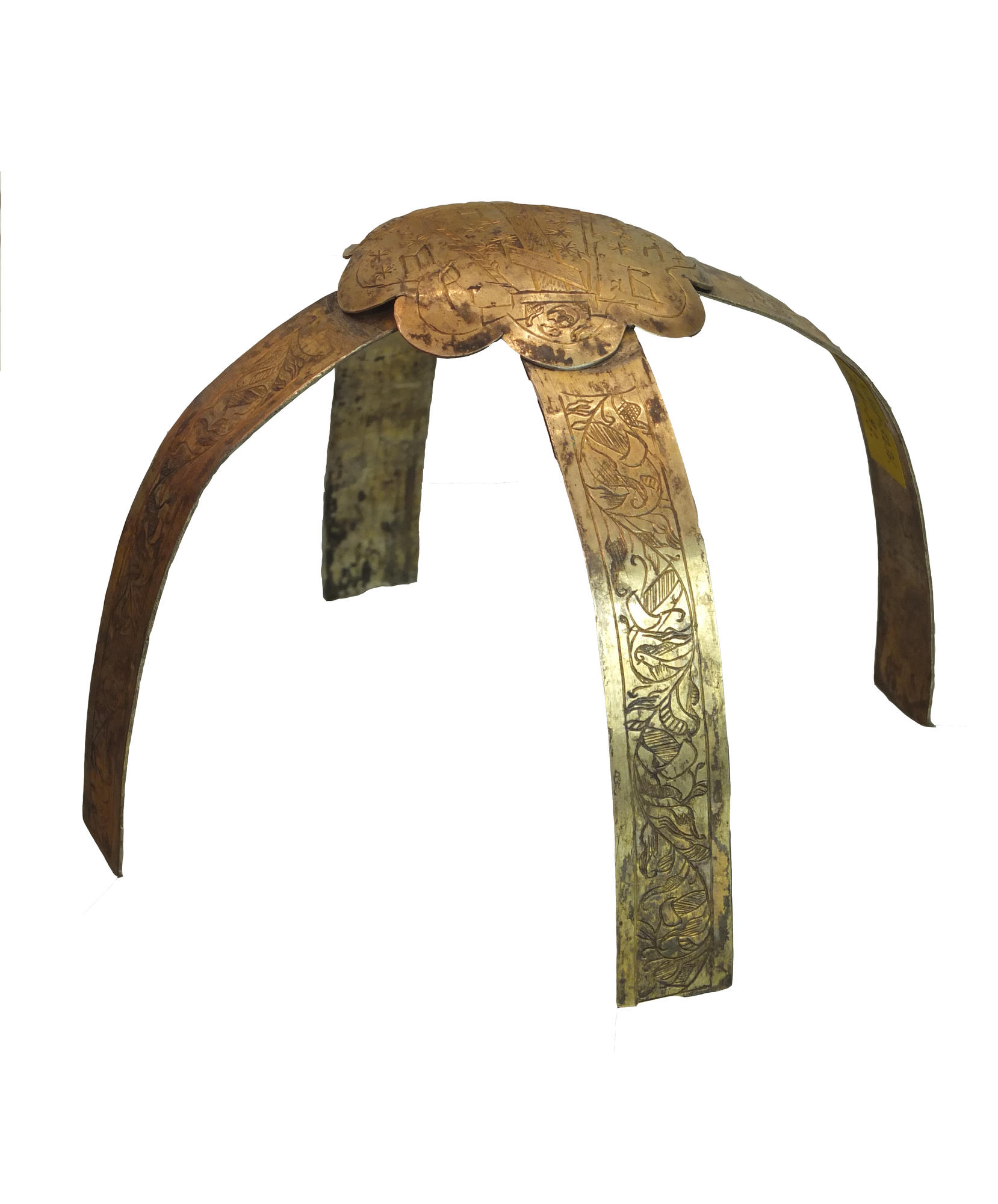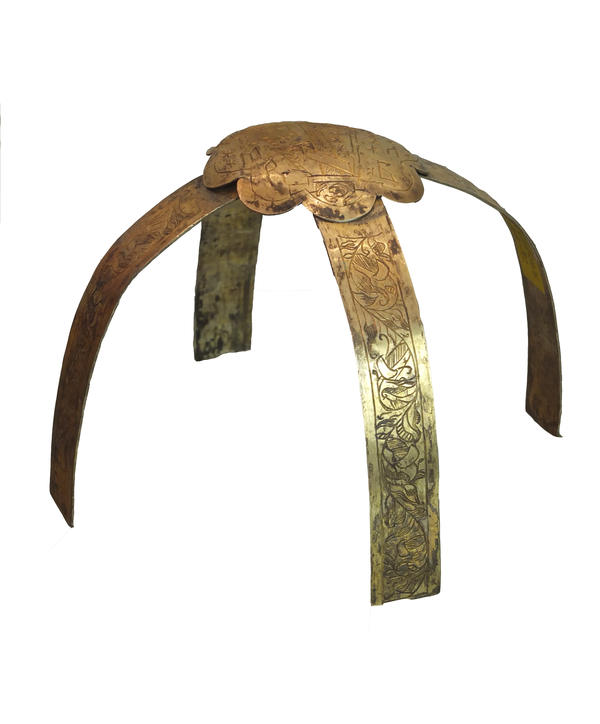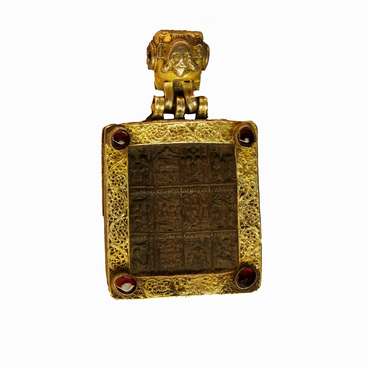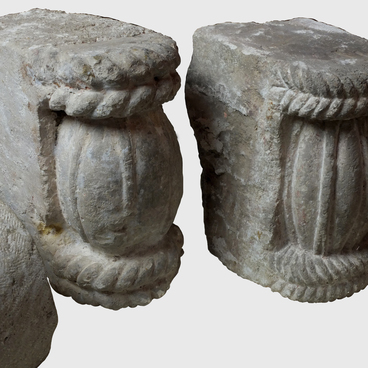An asterisk is a liturgical object used during the sacrament of Communion. It consists of two high metal bows connected at the middle with a stud or a screw and a nut. This construction permits the bows to close and fit one into another or to open and form a cross. The asterisk got its name due to the fact that it symbolizes the Star of Bethlehem that showed the Wise Men from the East the birthplace of Jesus Christ.
During religious ceremonies, the open asterisk is placed on a special liturgical vessel called diskos. It is placed so that the place where the bows cross is over the image of Christ in the diskos. At the moment of placing the asterisk, the words from the Gospel of Matthew are said: ‘And the star they had seen when it rose went ahead of them until it stopped over the place where the child was’.
The oldest asterisk which dates back to the middle of the VI century was found in the so-called Sion Treasure, a collection of Byzantine silver liturgical objects found at the territory of modern Turkey in 1963. One of the oldest images of an asterisk can be found in the XI century mosaic Communion of the Apostles in Saint Sophia church in Kiev: it is on the table, on the right of the diskos.
During religious ceremonies, the open asterisk is placed on a special liturgical vessel called diskos. It is placed so that the place where the bows cross is over the image of Christ in the diskos. At the moment of placing the asterisk, the words from the Gospel of Matthew are said: ‘And the star they had seen when it rose went ahead of them until it stopped over the place where the child was’.
The oldest asterisk which dates back to the middle of the VI century was found in the so-called Sion Treasure, a collection of Byzantine silver liturgical objects found at the territory of modern Turkey in 1963. One of the oldest images of an asterisk can be found in the XI century mosaic Communion of the Apostles in Saint Sophia church in Kiev: it is on the table, on the right of the diskos.
The asterisk from the collection of the Gallery dates back to 1679. It is made from silver and decorated with gilding and engraved vegetal ornaments. The bows are rounded: in more recent asterisks, dated 18th — 19th centuries, they were placed at a straight angle. At their crossing point, there is a decorative plaque. It has the shape of a circle with eight petals and is decorated with an engraved pattern.The asterisk from the collection of the Gallery dates back to 1679. It is made from silver and decorated with gilding and engraved vegetal ornaments. The bows are rounded: in more recent asterisks, dated 18th — 19th centuries, they were placed at a straight angle. At their crossing point, there is a decorative plaque. It has the shape of a circle with eight petals and is decorated with an engraved pattern.





